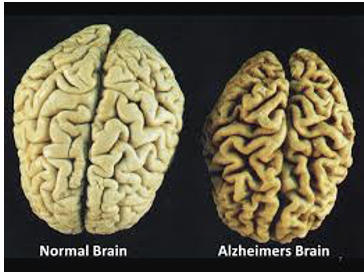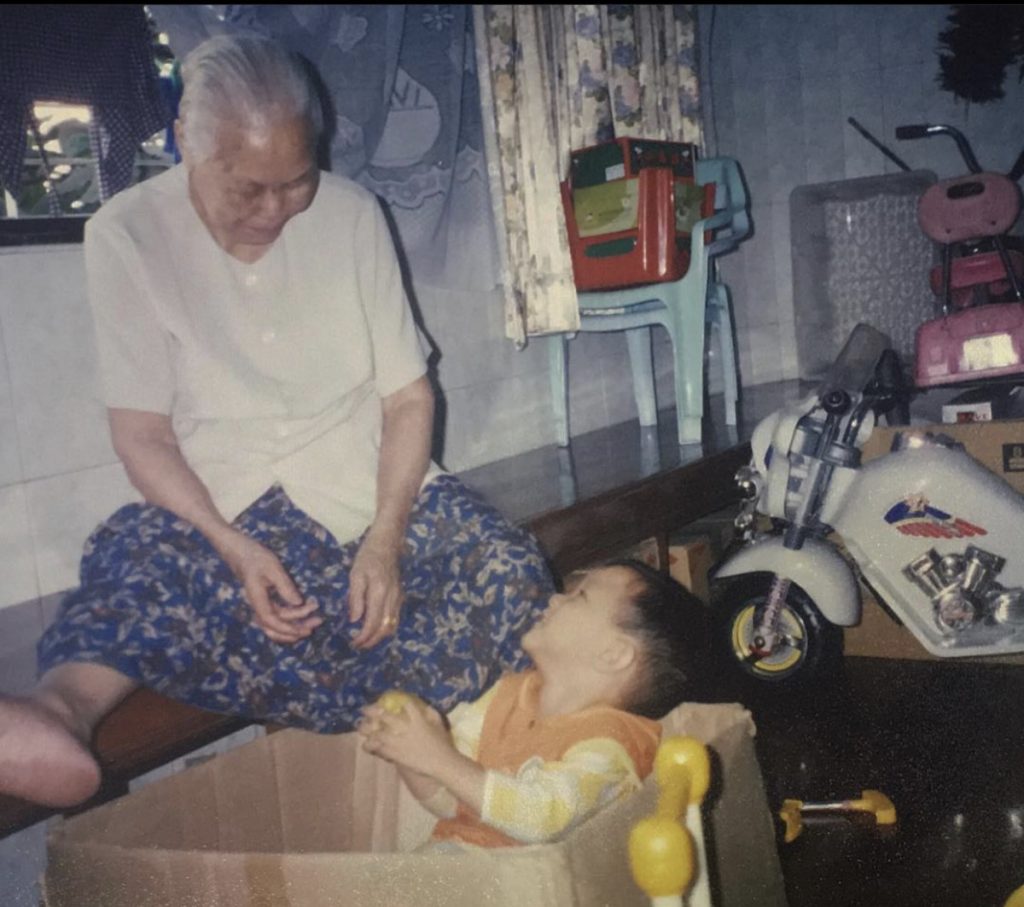The process of forgetting is a very scary one. I remember when I was a toddler in kindergarten, my grandmother would be the brightest, the loveliest woman aside from my mom, of course. She was the sweetest grandma and had the most memorable smile. Every day after I came back from elementary school, there would always be a sandwich with my favorite drink, which was at that time apple juice, fixed up right there on the dining table. As I grew older, my workload in school started increasing, and I began to have other interests such as sports, and different extra-curricular activities, or even just hanging out with my friends in school, all of which resulting in me not being able to go back home early. As time passed, the distance between my grandma and I grew, and the next thing you know I’m in my freshmen year of high school, and this was when my grandma was diagnosed with Alzheimer’s from old age. It was a very sad process, as the grandma, I once knew, was no longer aware of who I was, and the complex functions that a normal human being possesses are slowly deteriorating.
Fast forward to my freshmen year in university, when we started the Art on The Brains class at Emory University, it instantly caught my attention. I was always curious about science, and learning about my grandmother’s condition in detail was one of the things that I set out to do. This was in response to the fact that I wanted to protect my other loved ones such as my parents, and my uncles/aunts from the disease, or even lower their risk factors as it is genetically written that we are prone to Alzheimer’s disease. Talking about Alzheimer’s, it is a progressive disorder that causes brain cells to waste away (degenerate) and die. Alzheimer’s disease is the most common cause of dementia — a continuous decline in thinking, behavioral, and social skills that disrupts a person’s ability to function independently. An early sign of the disease is usually difficulty remembering recent events or conversations. As the disease progresses, memory impairments worsen and other symptoms develop. The symptoms are not only memory loss, but also include thinking and reasoning, making judgments and decisions, planning and performing familiar tasks, and changes in personality and behavior.
In one of the journals that describe a study conducted, “Scientists believe that for most people, Alzheimer’s disease is caused by a combination of genetic, lifestyle and environmental factors that affect the brain over time.” ( “Alzheimer’s Disease.”). In fact, the study, says that “Less than 1 percent of the time, Alzheimer’s is caused by specific genetic changes that virtually guarantee a person will develop the disease” (“Alzheimer’s Disease.”). These rare occurrences usually result in disease onset in middle age. The exact causes of Alzheimer’s disease aren’t fully understood, but at its core are problems with brain proteins that fail to function normally, disrupt the work of brain cells (neurons) and unleash a series of toxic events. “The healthy human brain contains tens of billions of neurons—specialized cells that process and transmits information via electrical and chemical signals.”(“Alzheimer’s Disease.”) They send messages between different parts of the brain, and from the brain to the muscles and organs of the body. Alzheimer’s disease disrupts this communication among neurons, resulting in loss of function and cell death. “There are many Key biological processes in the neurons of the Brain such as communication, metabolism, repair, remodeling, and regeneration.” (“Alzheimer’s Disease.”)

“As we age the brain typically shrinks to some degree in healthy aging but, surprisingly, does not lose neurons in large numbers.” (“What Happens to the Brain in Alzheimer’s Disease?”) However, when a person has Alzheimer’s disease damage is widespread, as many neurons stop functioning, lose connections with other neurons, and die. “Alzheimer’s disrupts processes vital to neurons and their networks. At first, Alzheimer’s disease typically destroys neurons and their connections in parts of the brain involved in memory, including the entorhinal cortex and hippocampus.”( “What Happens to the Brain in Alzheimer’s Disease?”) It later affects areas in the cerebral cortex responsible for language, reasoning, and social behavior. Eventually, many other areas of the brain are damaged. Over time, a person with Alzheimer’s gradually loses his or her ability to live and function independently. Ultimately, the disease is fatal. Although scientist doesn’t know the exact cause there is research in these two areas or proteins in which may cause Alzheimer’s disease.
PLAQUES
“In the brain, Beta-amyloid is a leftover fragment of a larger protein. When these fragments cluster together, they appear to have a toxic effect on neurons and to disrupt cell-to-cell communication. These clusters form larger deposits called amyloid plaques, which also include other cellular debris. These lead to the degradation of neutrons and their networks.” (“What Happens to the Brain in Alzheimer’s Disease?”)
TANGLES
“Tau proteins play a part in a neuron’s internal support and transport system to carry nutrients and other essential materials. In Alzheimer’s disease, tau proteins change shape and organize themselves into structures called neurofibrillary tangles. The tangles disrupt the transport system and are toxic to cells. These lead to the degradation of neutrons and their networks.” (“What Happens to the Brain in Alzheimer’s Disease?”)

However, I was surprised to find out that there were no cures for the disease but the only thing that could be done was to decrease the risk factors, which include Family History and genetics (which we cannot avoid), and sex (Females are prone to Alzheimer’s Disease due to living longer). The only risk factors we can avoid is to not have any poor sleep patterns, and be safe so we don’t suffer any head trauma.
Although it is a huge disappointment that there is no cure, I will be doing everything in my power to inform my family of the different risk factors, and hopefully avoid the diagnosis of Alzheimer’s for as long as possible.
Works Cited
“Alzheimer’s Disease.” Mayo Clinic, Mayo Foundation for Medical Education and Research, 8 Dec. 2018, www.mayoclinic.org/diseases-conditions/alzheimers-disease/symptoms-causes/syc-20350447.
“What Happens to the Brain in Alzheimer’s Disease?” National Institute on Aging, U.S. Department of Health and Human Services, 16 May 2017, www.nia.nih.gov/health/what-happens-brain-alzheimers-disease.

This blog post was very interesting! Alzheimer’s disease is definitely something I am interested in learning about since I know it is one of the most common diseases diagnosed in people aged 65 and above. I also loved the strong personal connection between the you and the topic itself. I enjoyed reading the first paragraph and how you got interested in learning more about Alzheimer’s. There was great emotion in your writing. I also find it interesting that there is still no cure for the disease. With it being such a common illness, I hope scientists can figure out a way prevent these brain cells from degenerating and wasting away soon. Great post!